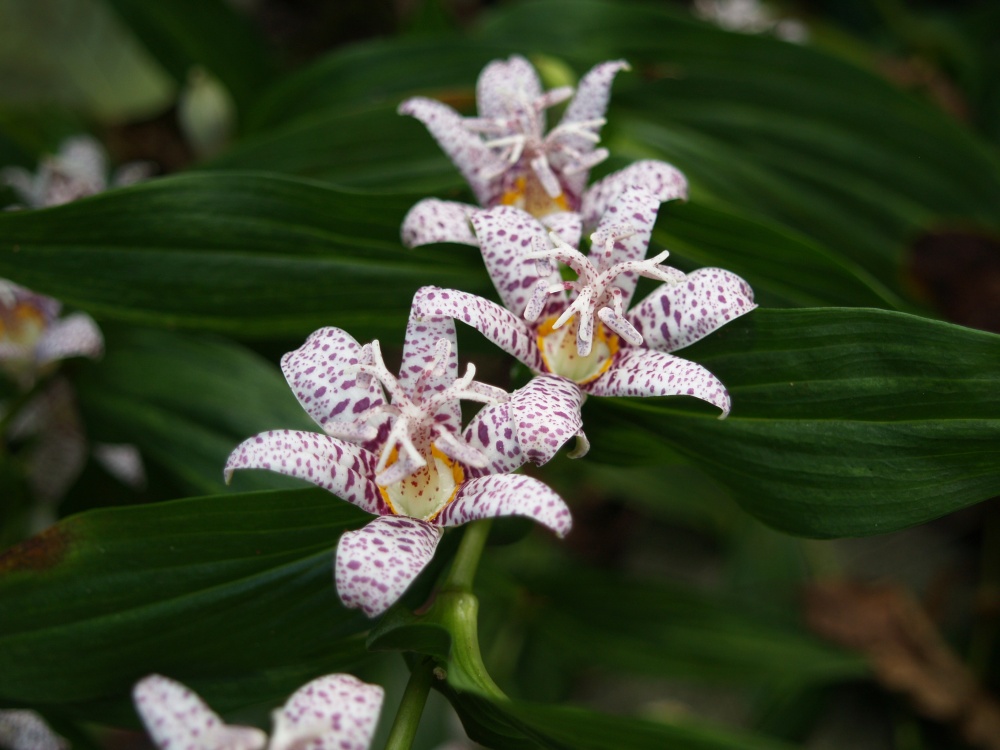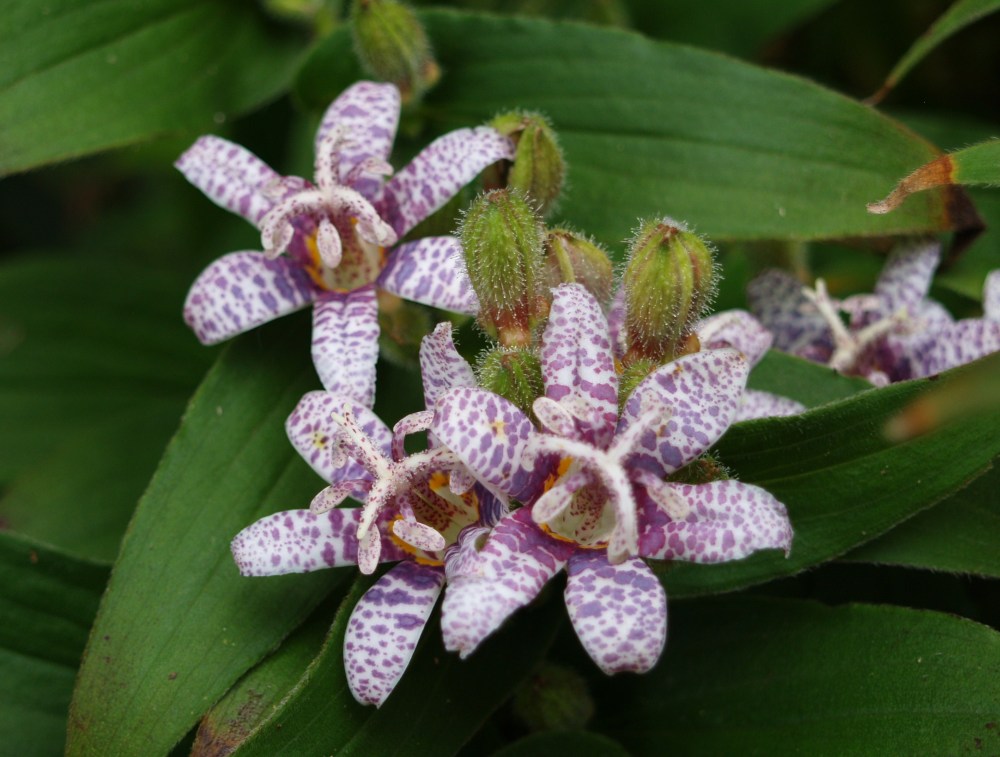There is a place in the garden for extravagant masses of blooms that can be appreciated by neighbors zooming past in their cars, though to my thinking these displays are best suited to commercial properties and entrances to communities. Many homeowners take pride in planting masses of petunias and impatiens that flower without interruption for many months, seemingly without changing at all until frost kills them to the ground. While I’m not averse to plugging New Guinea impatiens into a gap or two, I’m inclined to favor more subtle blooms, even if these flower for considerably shorter periods.
I suppose that any gardener can catalog handfuls of flowers in their garden that they find to be handsome at close range, but not much to talk about from a distance. For me, there is hardly a flower that compares to the lovely ground orchid (Bletilla striata, above) that blooms for a few weeks only, and I am particularly fond of the many varied forms of Japanese iris (Iris ensata, below). If early and late flowering cultivars of iris are selected the blooming season can be extended to four or five weeks, but then the flowers are gone until following spring.
Japanese iris makes an acceptable display from a distance, but the form of the flower is best appreciated much closer up. The small flowers of Toad lilies (Tricyrtis) are hardly visible from more than a few paces away, but these are some of nature’s finest creations upon closer inspection. I’ve assembled a small collection in my garden, with small groupings and single plants scattered about. In late summer and early autumn when many flowers are winding down for the season, toad lilies are at their peak, and I feel compelled to add a new variety or two annually. I’ve yet to find any that are less than splendid, though occasionally I manage to kill a newly planted treasure through neglect.
Twice I’ve killed white (above) and yellow flowered toad lilies purchased through the mail, and finally I’ve decided that the small plants do not have adequate roots to survive the lack of care that I often provide for new plantings. Toad lilies are not delicate at all when planted from a larger container, and in both sun and part shade they grow vigorously. The foliage of ‘Miyazaki (Tricyrtis hirta ‘Miyazaki’, below) occasionally suffers a slight amount of scorching along the edges by mid summer, though it is planted with sufficient shade from the afternoon sun, but other toad lilies are not bothered at all. 
With more shade toad lilies tend to stretch, and a light pruning in early summer is often needed to keep them more compact. If pruned in mid summer, which is when I’m most likely to get around to it, the flowering is delayed for a few weeks, pushing the final blooms far into October. I’ve found that deer mostly ignore toad lilies, but when the remainder of the garden is protected by a repellent deer will nibble the foliage nearly to the ground, so now I routinely spray these along with hostas and more susceptible plants.
The first toad lily I planted was ‘Sinonome’ (Tricyrtis ‘Sinonome’, above), which is also the earliest to flower in my garden. It begins to bloom by mid August, and often will continue into October, but the long period of flowering results in a sparse display compared to other varieties. ‘The foliage of ‘Sinonome’ is pleasant, and in nearly full sun it grows with more compact form than other toad lilies.
I’ve found that varying leaf sizes and colors of hostas can be planted side by side with satisfactory results, but the texture and branching habits of toad lilies clash to my eye, so a single variety is best used when several are planted in close proximity. A second variety (or more) look fine if they are planted a few feet away, particularly with Japanese Forest grass (Hakonechloa macra ‘Aureola’) or other finely textured plants between them. 
I suppose that because toad lilies are not more extravagant bloomers they have not gained widespread popularity, so their distribution remains limited in garden centers. This makes my effort to expand my collection more difficult, but I’ll keep at it, and I’ve not yet given up on the white and yellow flowered types.
Isn’t it interesting what plants grow easily in some parts of the world and yet are rarities in others? I’ve never seen Bletilla striata before and it looks loveley!
Ground orchids have worked quite well in my damp lower garden, and in this wet summer when other plants are yellowing and showing the stress of poorly drained soil, the orchids appear content in the dampness. I am certain that every gardener, no more which part of this planet he occupies, is envious of some other region – and all are likely to figure that conditions there must be much easier to grow in.
I really enjoyed your discussion of toad lilies, since I planted a variety of them two years ago, and am now watching them bloom. I, too, highly admire the beautiful flower shape and coloration. It’s a shame they aren’t larger, since I think they would then get more attention.
Oh, unfortunately, the toad lily “variety collection” I bought turned out to have only one type of toad lily in it. Either that, or they all reverted to one type.
And I’ve often wondered if we’ll ever have 3-D pictures of flowers rather than the current 2-D photos. If technology ever gives us 3-D photos, a large toad lily blossom would be fascinating to view!
The limitations of photography are all the more reason to plant for yourself, to witness these marvelous blooms close up. As I go through my photographs I realize that the flowers of many of the toad lilies in my garden are similar, and that it is the foliage and branching that distinguish one from the other. I suppose this is part of the reason that the pure white or yellow flowers intrigue me.